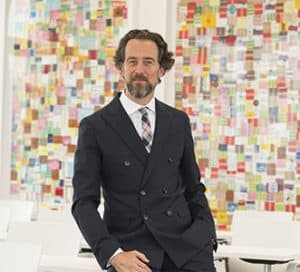When it comes to desk organisation, where derivatives fit in has been a key focal point for firms in recent times, with key buy-siders unpacked their approach to managing the evolving asset class on a TradeTech panel this week.

Eric Boess
Eric Boess, global head of trading at Allianz Global Investors, explained that the firm set out with a “classic” set up when trading began in 1996/97: “We had equities, fixed income, FX and money markets and we had a dedicated derivatives desk at the time because we had very derivatives-heavy product suite […] that derivatives team ran portfolios with portfolio management responsibilities.”
This approach however changed just this year, with the derivatives experts having been moved back into the specific asset class trading teams, Boess shared, adding that importantly this decision should not be interpreted as the firm requiring less derivatives expertise.
“We want them to live within the asset classes they serve because, as was the case previously, understanding of the mechanics, the pay-outs, the markets, the margining processes are still super important, but derivatives are far less exotic than they have been.
“Portfolio managers use them without fear, it’s a tool in the box which is not for everybody, but it’s getting there. Hence, why I want asset class experts understanding derivatives […] It’s getting to a level where the derivatives are playing an important role, but a very ingrained role in the underlying markets as well which I want to reflect in our trading structure.”
Read more: T.Rowe Price’s Matt Howell on best execution in equity derivatives
As things get more complicated and buy-siders are looking to change their structure in a way which moves derivatives experts back into the asset classes, looking to create and evolve new expertise on the desk.
Also providing background on their firm’s set ups were Matt Howell, global head of derivatives and multi asset trading at T.Rowe Price, and Tim Miller, senior trader at Fidelity International.
Howell explained that from his side, the firm had a “conscious choice” to make as to whether to “embed trading within that centre of excellence” or instead look to the individual trading teams. Ultimately for T.Rowe, the firm had much the same reasons (as Allianz) to rethink and readjust their strategy.
“Our mission was very much to lift the whole trading team rather than create pockets […] Our FX traders trade our FX derivatives, our equity trading desk looks after equity derivatives and for us that makes complete sense.
He further explained: “Aside from equity derivatives, if you look at where the credit market is going, macro credit and understanding how that all stacks up and how those things work is critical. It’s a critical skillset regardless of what you’re executing.”
Miller described a similar approach for Fidelity, highlighting that each team, whether it be fixed income, FX or equity, looks after their derivatives within their pods also.
The panel agreed that with the intuitiveness of derivatives developing, it has become critical to think about derivatives when running asset classes. Miller also flagged that it’s important to be ready to mirror how the sell-side is set up when it comes to multi-asset approaches.
Elsewhere, the experts spoke to the current state of play across Europe, agreeing that markets becoming increasingly interconnected is a decidedly positive evolution, in particular as the industry continues to combat increasingly volatility.
Boess explained: “The reality is that markets are just getting increasingly interconnected and more and more you see the individual parts of the capital structure being done more closely. Heads of markets are trading closer to each other.”
The point being, that in capital markets an important tool is a well-rounded view of the entire process, the trade, the facilitators and everything in between. “Trading has to adjust,” added Boess.
Raphael Rochon, who works in equity derivatives sales at IMC Trading, spoke to the high level of fragmentation in Europe, especially when comparing the region to the US, and how these intricacies are playing out.
“There is a branch of exchanges for one clearing house in Europe. Because there’s as many exchanges as clearing houses you can move all over the place, making it possible as market makers to be as tight as you can. However, in the US you cannot lean on your inventory as you have one exchange to trade on.
“It’s a big issue and I think that’s why it’s not doing as much as we would like to, it’s the main reason. If we were to have more harmony in Europe, then the market has big potential.”